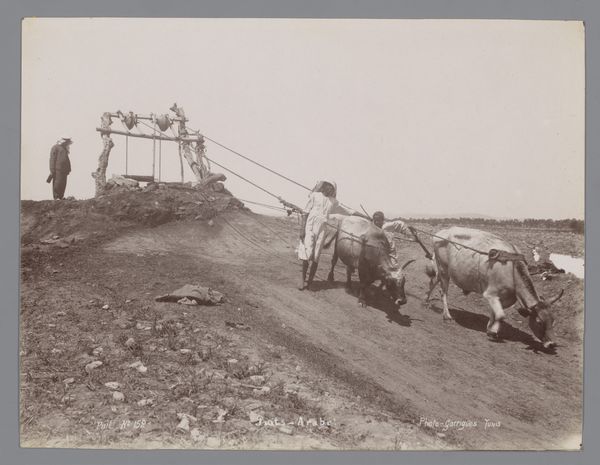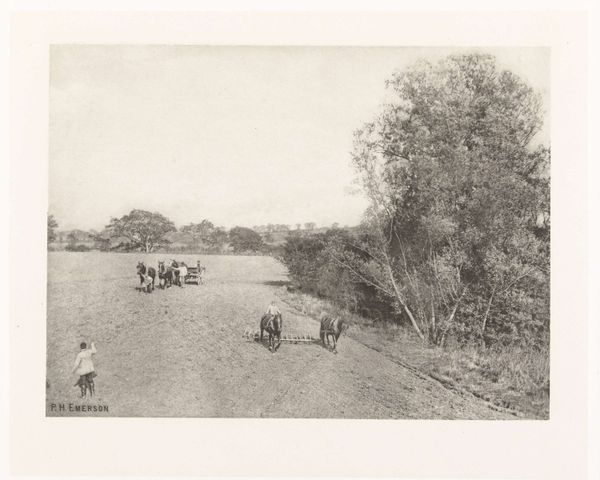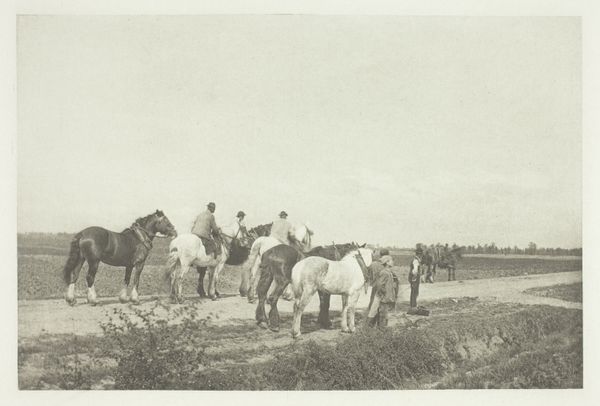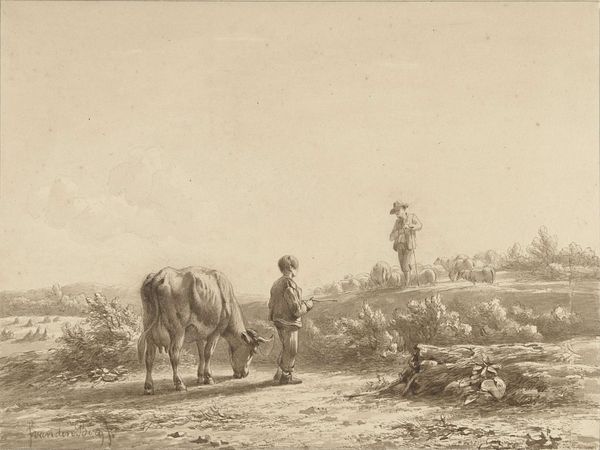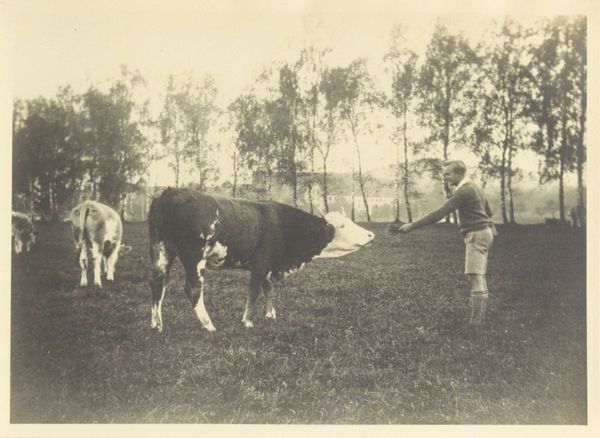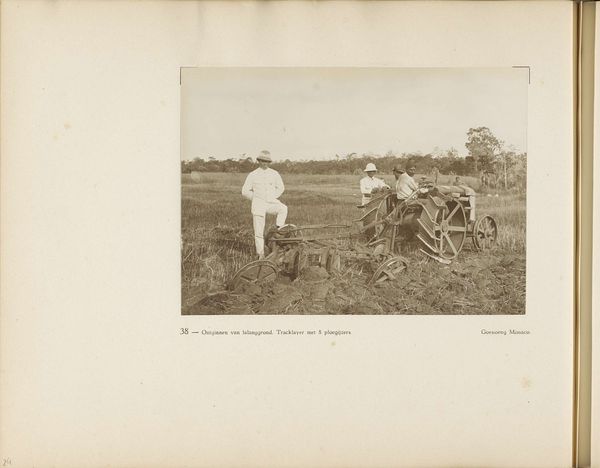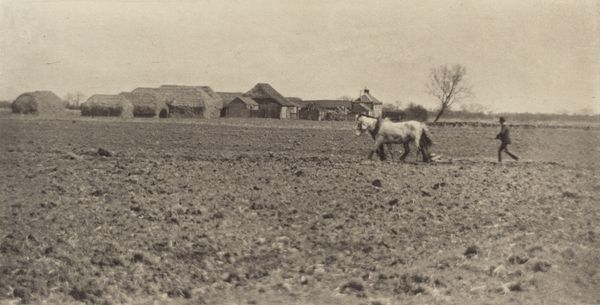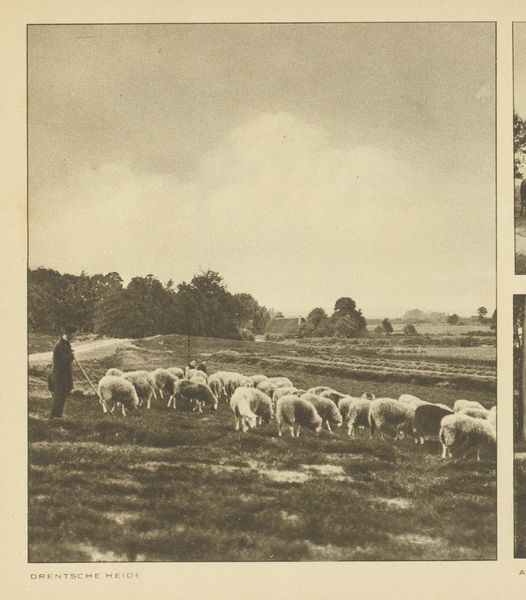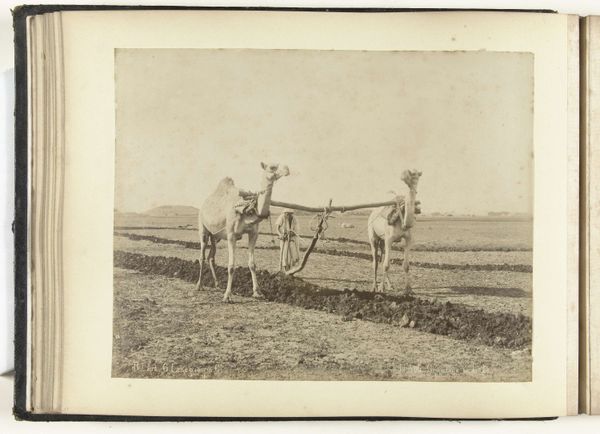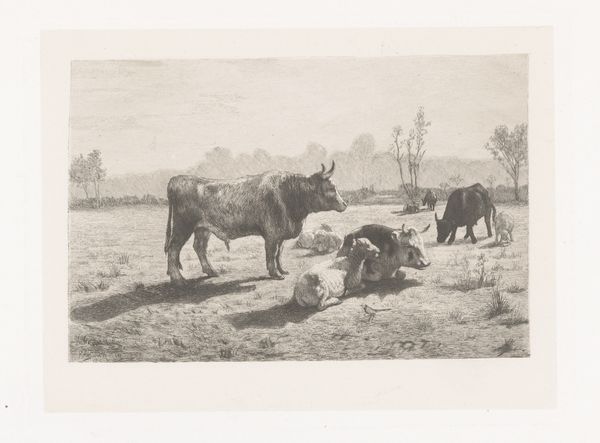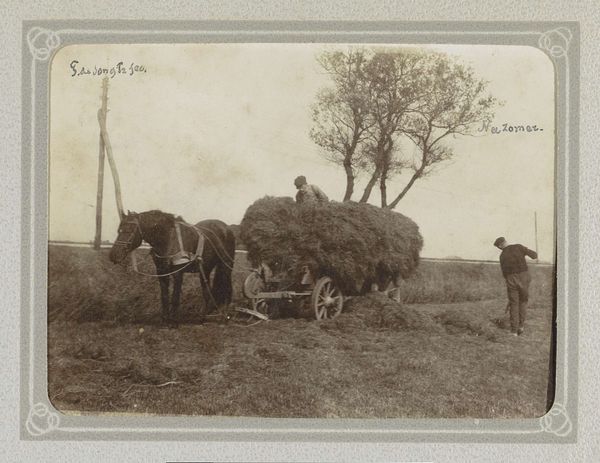
plein-air, photography, gelatin-silver-print
#
natural tone
#
dutch-golden-age
#
plein-air
#
landscape
#
outdoor photograph
#
photography
#
couple photography
#
nature friendly
#
gelatin-silver-print
#
genre-painting
#
naturalism
#
realism
Dimensions: height 164 mm, width 224 mm
Copyright: Rijks Museum: Open Domain
Curator: Richard Tepe captured this rural scene sometime between 1900 and 1930. It's a gelatin silver print called "Twee ossen voor een ploeg"—Two Oxen Before a Plough—currently held in the Rijksmuseum. Editor: There’s a quiet stillness to this piece, even with the depiction of labor. The composition is quite stark: two oxen and a farmer dominate the foreground against a muted, hazy background. The textures of the soil and animal hides are also wonderfully emphasized. Curator: I think what’s really compelling here is how it encapsulates a period of intense societal shift in the Netherlands. While we see these traditional farming practices, photography itself was becoming a powerful tool for documenting—and even shaping—ideas about national identity and rural life. Editor: Absolutely. From a purely formal perspective, look at the tonal range Tepe achieves with a monochrome palette. The way light interacts with the bodies of the oxen, particularly highlighting their musculature, creates a powerful contrast. And it’s enhanced by a classical balance. Curator: And who was this intended for? The rise of photography coincided with increasing urbanization and a growing middle class. Images like this would likely evoke a sense of nostalgia or perhaps a romanticized vision of simpler, agrarian times among urban dwellers. Editor: You make an astute point. If we look closer at the structure within the scene, we will note the composition directs your eye. There’s the diagonal line that leads the gaze from the oxen toward the farmer in the field. This guides our viewing of the whole scene. Curator: Exactly. It highlights not only agricultural work, but it may also highlight a growing disconnect from that type of life. In some ways, the work asks, what does progress actually mean? Tepe documents an intimate moment that, through industrialization, disappears from a large number of people's memories. Editor: So, we’ve got this visual echo of tradition, masterfully constructed through light and shadow. I appreciate its aesthetic strength combined with its societal implications. Curator: Indeed, the work serves as a reminder of a way of life undergoing profound transformation, making it far more resonant than a simple photograph of farm animals.
Comments
No comments
Be the first to comment and join the conversation on the ultimate creative platform.
